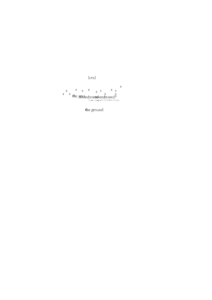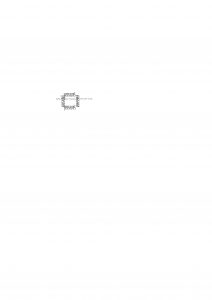MOTHERBABYHOME memorialises the 796 infants and children who died at St Mary’s Mother and Baby Home in Tuam, Ireland. The location of their graves is unknown, though local knowledge, the research of local historian Catherine Corless, and recent excavations point to a field near the old site of the Home, as well as to the likelihood that some death records were falsified and the children were adopted without the knowledge or consent of their mothers. An excavation and radical repositioning of voices and landscape, the 796 poems are composed entirely of text taken from historical archives and contemporary sources related to the Home, including files given to the Campanello by Catherine Corless. Released by zimZalla Avant Objects on April 19, 2019, the poems are printed on transparent vellum and held in a handmade oak box. MOTHERBABYHOME is also available in a reader’s edition book. Kimberly Campanello will give a durational performance of the 796 poems at the Oonagh Young Gallery in Dublin on April 24, 2019. Extracts of MOTHERBABYHOME will be exhibited as part of Radical Landscapes: Innovation in Landscape and Language Art at the Plough Arts Centre in Devon (March 23 – April 20).
I became interested in working in this way (with archival material) when writing my second poetry collection Strange Country (on the sheela-na-gigs) because of the dearth of information on them. Strange Country uses found archival text from a range of antiquarian journals dating from the 19th century right through to mentions of the carvings in the Irish Times. Here is an example of a poem from that collection created in this way. In Strange Country, I also used archival methods to respond to the death of Savita Halapannavar in a poem called ‘Birthing Stone‘, which I talk about in an interview here.
When the Tuam story broke in the mainstream press, I began working with the emerging textual material the story produced as I felt it resonated with the sheela-na-gigs and Savita, and because, as a feminist who was raised Catholic, I couldn’t really ignore it. I felt that the stories of these children and women, and the ‘material’ of those stories, children, and women had quite literally been submerged in the landscape and archive of Tuam. The materiality of it felt vital to me, as bodily autonomy was what these women and children were denied.
I began working further, intervening in, exposing, clarifying the unfurling material as it appeared in the press.
The first poem I did was this one. I began working further, intervening in, exposing, clarifying the unfurling material as it appeared in the press, including reactions that sought to undermine the truth coming out by suggesting the stories were a kind of ‘Catholic bashing’. I set up a Tuam Mother and Baby Home Google alert to gather the material more systematically. I soon realised I would have to do 796 pages, one for each child, and include a name, age, and death date on each page. The ‘single poem about the very bad terrible thing’ felt insufficient, perhaps has always been insufficient. I felt I was creating a monument, an intervention in the burgeoning archive, an archive that had been there all along (Catherine Corless uncovered it in all its detail). I felt that the archive was articulating itself like joints, bones.
In June 2015, I contacted Catherine Corless and sent her the thirty or so pages of the visual and conceptual poetry I had done. I explained my rationale for writing in this way, and asked if she thought it was a good idea, if she thought it was suitable. If she had said no, I probably would have stopped – I felt that it would defeat the purpose if the person responsible for the revelation didn’t find my sifting and shaping resonant. She understood what I was trying to do. I asked if I could meet her and use her files toward building this interventionary poetry memorial. She agreed, and I went to her home and scanned numerous files at her kitchen table. Since that day in July 2015, I have been working through those files and the expanding archive. The material in MOTHERBABYHOME runs up February 17, 2019, the date the Irish Commission of Investigation into Mother and Baby Homes was due to give its final report (delayed yet again). I finished the book on March 4th as a result of working through that recent material.
The road to completion of this book has been challenging not least because my niece was diagnosed with hydrocephalus in 2016. Because of my work on MOTHERBABYHOME, I knew exactly what that meant, and the death sentence this condition was, and indeed still is, for many children. That revelation froze me for almost a year and still pulls me up when I read the death certificates of these children, several of whom have hydrocephalus listed as their cause of death. At present, my niece is doing very well after four surgeries, and the delay meant I could include so much more material, including the voices of survivors that began to emerge so clearly in the past two years.
Kimberly Campanello is taking part in Radical Landscapes: Innovation in Landscape and Language Art at The Plough Arts Centre, Great Torrington, Devon from 23rd March to 22nd April 2019.
www.singingapplepress.com
In support of the exhibition, The Learned Pig’s Spring 2019 editorial season is devoted to Radical Landscapes.
Cover image: Map 13, Growth of Tuam, to 1892. In J.A. Claffey, Irish Historic Towns Atlas, no.20, Tuam. Royal Irish Academy, Dublin, 2009.




